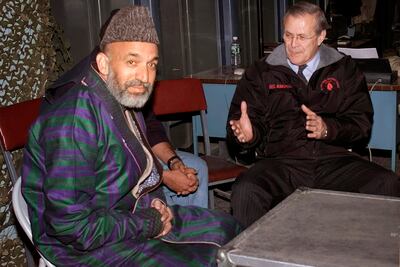I recently returned from the International Journalism Festival in Perugia, Italy, a gathering of hundreds of global reporters, editors, and media development organisations. It was the first time I had attended an event where journalistic policies were scrutinised, along with tools that will determine the future of journalism.
At the centre of discussion was how artificial intelligence – or AI – and journalism will align. Academics from institutions such as the London School of Economics and the Columbia School of Journalism and leaders in communications studies were present and discussed the pros and cons of whether machines will one day do the job that reporters now do.
There were also editors in attendance. Already, major news organisations such as the Associated Press are looking at how to use machines to gather, produce and distribute the news. AI can be used “to leverage artificial intelligence and automation to bolster its core news report".
Gina Chua, a Singaporean journalist and former Reuters executive who helped launch Semafor, an online platform, talked about how AI can be used to rewrite entire articles for different audiences. She explained how by plugging an article into a chatbot, it could come out with two versions – one in a “New York Times style”, another in a punchy, tabloid New York Post version.
It sounds dystopian, but these “language models” can already be found in tools like Microsoft’s Copilot. Copilot can rewrite articles for different audiences, as well as researching and working alongside spreadsheets like Excel.
The idea of AI in journalism is unsettling for me, but I do recognise we need to think of the practical uses of AI. Most editors agree that AI will never replace journalists, but as the AP’s Lisa Gibbs said at the conference: “They make really good assistants. They can help journalists keep track of what is going on in their field.”
The downsides are ethical risks as well as risks to intellectual property. “Now the lawyers are involved,” Gibbs added.
There are also enormous risks of inaccuracy. Most writers I know still refuse to use chatbots – software designed for online chat – because the “use of language is horrific” one novelist friend who also writes Hollywood screenplays told me. “They are wildly inaccurate, describing someone like [the late writer] Christopher Hitchens as a comedian rather than a writer.”
For me, there is an issue of human rights, and what AI means to the future of workers. Andrew Stroehlein, European media director of Human Rights Watch, also agrees. “On one hand, there is the promise of tedious, formulaic task being done by machines. Indeed, some financial news stories are already automatically generated,” Mr Stroehlein said. “On the other hand, many journalists naturally see a threat to their livelihoods if machines are writing their stories.”
Like me, Mr Stroehlein is also concerned how AI will affect “gig workers” and how it will edge freelancers, already under threat, out of the market.
He worries that facial recognition at train stations and airports to track people can go wrong. Studies have already shown that people of colour are at risk of being misidentified and falsely accused. There is also, he says, the risk of “digital dehumanisation”.
I find it incredible that so much has changed in the three decades since I started as a reporter. At that time, we did not even have mobile phones. I got my first email account, CompuServe, in 1993 in Bosnia. But I couldn’t use it for years, as there was no internet and no electricity.
I was not a part of the telex generation – those who covered the Beirut civil war in the 1980s, for instance – who had to report back then using archaic devices. But I had to often “call in” my stories. This meant finding a landline telephone – or a satellite phone for $50 a minute – to dictate, tedious word by word, to a patient copy editor back in London.
That job – the call taker – has long been edged out of the marketplace.
The use of cell phones as journalistic tools began roughly during the 1999 war in Kosovo. If you had a charged phone and a signal – photographers could upload photos, writers could file stories using a wire and a computer.
In Afghanistan, during the fall of the Taliban in December 2001, cellular signals emerged within days. Within weeks it seemed everyone, even in remote villages, had a mobile phone. I remember thinking that the mobile phone changed reporters' lives. But it also changed a country. Afghanistan appeared to have skipped a whole generation in terms of technology. People who never had land lines because of years of Taliban isolation now had mobile phones. An entire world opened with regard to global communication.

Then came digital journalism and the rise of platforms. I don’t use TikTok or Snapchat, but I do use Twitter and Facebook. There was much discussion in Perugia of Twitter “dying out post-Elon Musk” and “no one checking Facebook” anymore.
Once, Twitter and Facebook were important tools used by journalists to reach audiences, promote their work, and respond to criticism. Twitter helped launch important activist movements such as Black Lives Matter, and demonstrations of the Arab uprisings were announced on Facebook.
Emily Bell, a thought leader from Columbia School of journalism, said she once claimed Twitter was the most important tool for journalists since the telephone. Twitter told people what was going on in the world, “irrespective of your status, or your credentials”.
But despite the fact it took free press seriously, it also brought the rise of disinformation, of online trolling, of the spread of racism and misogyny. Ms Bell said that post-Musk, it is more dangerous to be on these platforms: “It's a real indictment of how terrible America has been at regulating the information space.”
My takeaway from Perugia was that it is vital to understand how technology is evolving and changing news. This both helps and terrifies some of us. I am a dinosaur – I still buy newspapers and books and I actually have a library card – but even I know that AI is not just a monster robot, and can be used as a democratic tool, or help with climate change or human rights.
For instance, at La Nacion, a 153-year-old newspaper in Argentina, AI helped to develop the shape of solar farms. Or take Forensic Architecture, a multi-disciplinary research group based at Goldsmiths' College in London, which is able to use extraordinary architecture models and AI to highlight human rights violations such as the destruction of the Mariupol Theatre in Ukraine, where more than 300 people died from missile attacks. This kind of work helps NGOs like mine, The Reckoning Project, build cases against war criminals.
The real takeaway for me is that newsrooms (and reporters) need to broaden their views on AI. We can take the best of it and leave the scarier tactics behind.
But also, Perugia highlighted the importance of a global community. Because so many journalists are working in exile, it is essential to team up with other organisations to conduct investigations. I met representatives of platforms from South Africa and the Philippines doing extraordinary work to shine a light on their governments, using innovative tools and resources.
It is a long way from my days of dictating copy to someone sitting at a desk in London. But it is progress, and important for everyone striving to bring the truth in the open, and to share important work.


